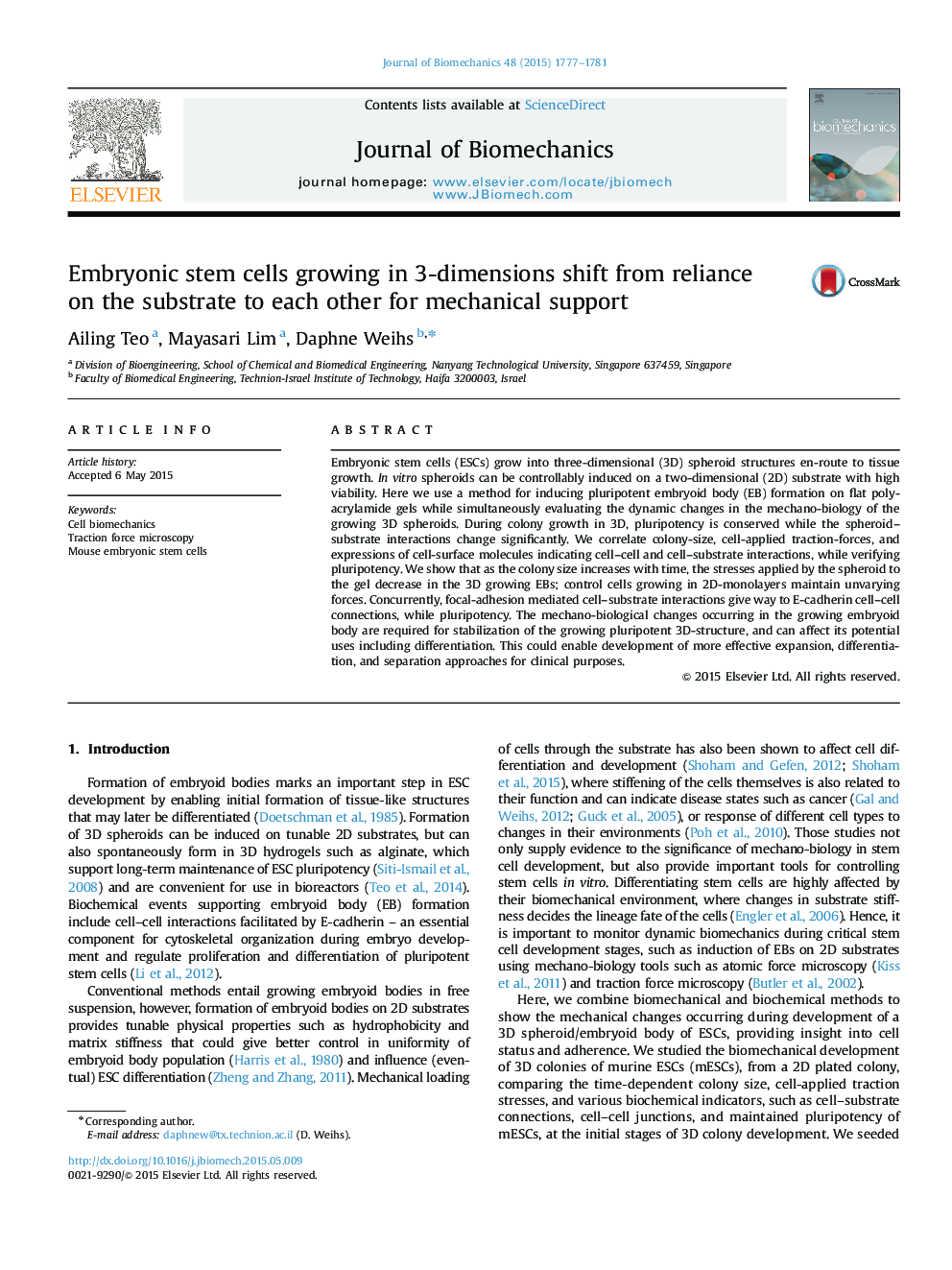| Article ID | Journal | Published Year | Pages | File Type |
|---|---|---|---|---|
| 10431386 | Journal of Biomechanics | 2015 | 5 Pages |
Abstract
Embryonic stem cells (ESCs) grow into three-dimensional (3D) spheroid structures en-route to tissue growth. In vitro spheroids can be controllably induced on a two-dimensional (2D) substrate with high viability. Here we use a method for inducing pluripotent embryoid body (EB) formation on flat polyacrylamide gels while simultaneously evaluating the dynamic changes in the mechano-biology of the growing 3D spheroids. During colony growth in 3D, pluripotency is conserved while the spheroid-substrate interactions change significantly. We correlate colony-size, cell-applied traction-forces, and expressions of cell-surface molecules indicating cell-cell and cell-substrate interactions, while verifying pluripotency. We show that as the colony size increases with time, the stresses applied by the spheroid to the gel decrease in the 3D growing EBs; control cells growing in 2D-monolayers maintain unvarying forces. Concurrently, focal-adhesion mediated cell-substrate interactions give way to E-cadherin cell-cell connections, while pluripotency. The mechano-biological changes occurring in the growing embryoid body are required for stabilization of the growing pluripotent 3D-structure, and can affect its potential uses including differentiation. This could enable development of more effective expansion, differentiation, and separation approaches for clinical purposes.
Related Topics
Physical Sciences and Engineering
Engineering
Biomedical Engineering
Authors
Ailing Teo, Mayasari Lim, Daphne Weihs,
